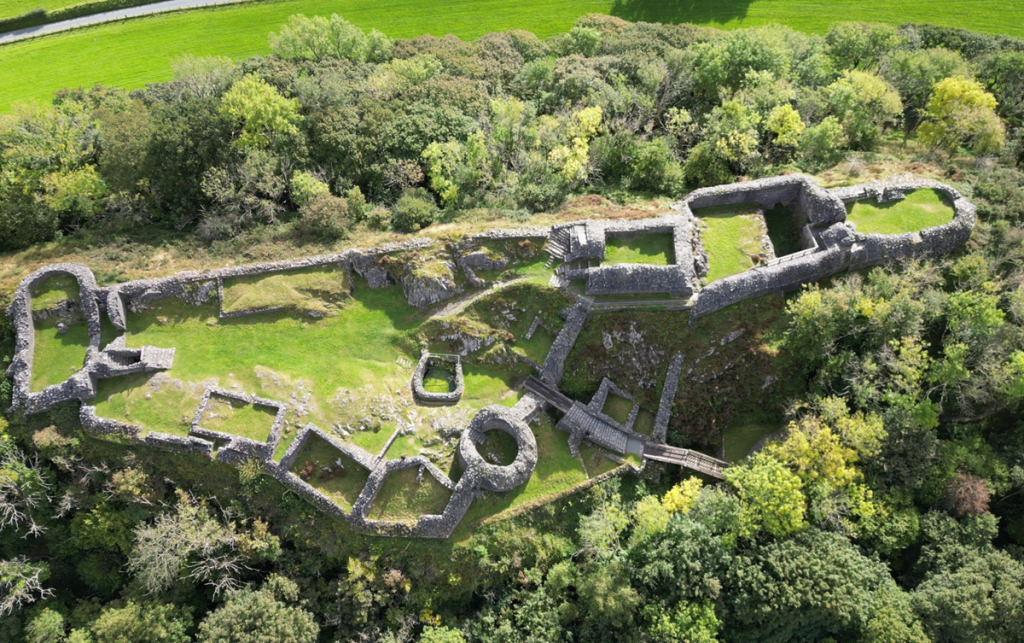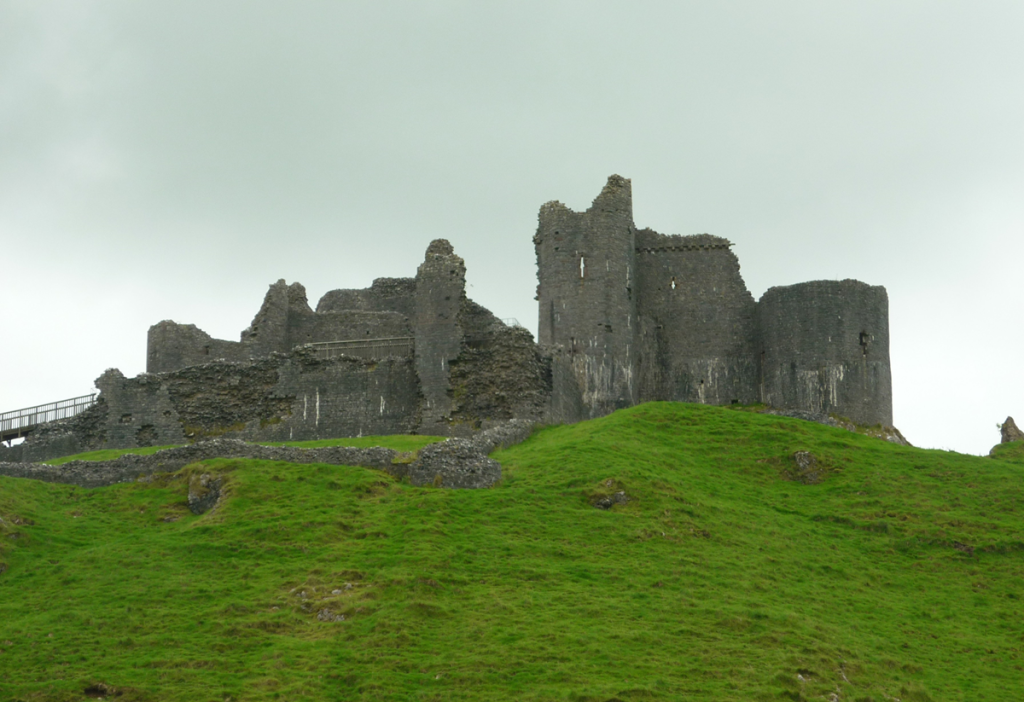Wales is renowned for its magnificent castles. While Edward I’s grand castles like Caernarfon, Conwy and Harlech are well- known symbols of conquest by the English, Wales also boasts a collection of native Welsh castles built by its own princes.
These fortifications reflect a distinct architectural style, with rugged stonework and strategic placements that now seem to form part of the natural landscape.
Edwardian castles may often steal the limelight, but the native Welsh castles possess a unique, rugged charm that reflects the spirit of Wales itself. Whether standing in scenic isolation, like Carreg Cennen, or rooted in the mountain passes of Snowdonia, like Dolbadarn, these castles offer a journey into a time when Wales was a fiercely independent nation, and its fortresses were both symbols of pride and resilience.
Here is our pick of five of the finest native Welsh castles: Dolbadarn, Dolforwyn, Castell-y-Bere, Criccieth, and Carreg Cennen, each with its own unique story and charm.
Dolbadarn Castle

On a hill overlooking the scenic Llyn Padarn in the heart of Snowdonia, Dolbadarn Castle is one of the most iconic native Welsh castles. Built in the early 13th century by Llywelyn the Great, Prince of Gwynedd, Dolbadarn’s strategic location allowed control over the Llanberis Pass, a key route into northern Wales.
The castle’s most distinctive feature is its round tower, which looms large against the mountainous backdrop. This tower, built with thick walls and a commanding height, served both as a symbol of power and as a defensive stronghold. Although Dolbadarn is comparatively small, its presence is no less imposing.
The remains offer a glimpse into medieval Welsh life, where a prince’s influence was projected through grand, dominant architecture. Today, Dolbadarn stands as a romantic ruin, blending perfectly with the dramatic Snowdonian landscape.
Dolforwyn Castle

In its ruined state, it takes some imagination to picture the grand scale of Dolforwyn Castle in its heyday. Built by Llywelyn ap Gruffudd, grandson of Llywelyn the Great, in the 1270s, Dolforwyn was intended as a stronghold for the principality of Gwynedd in its struggle against the English Crown.
Located on a wooded hill overlooking the Severn Valley, this castle had strategic significance as it stood watch over the borderlands between Wales and England.
Dolforwyn’s construction was remarkable for its time, with a blend of Welsh and Marcher (border region) architectural styles. The layout consists of a central keep and bailey enclosed by a strong curtain wall, emphasising Llywelyn’s intent to create a formidable defence.
However, Dolforwyn’s history was short-lived; it was captured by English forces just a few years after its construction. Today, its remains are modest, but its history as a symbol of Welsh resistance endures, and its secluded hilltop location offers panoramic views across the borderlands it once protected.
Castell- y-Bere

Situated in the rugged landscape of south-western Snowdonia, Castell- y-Bere is an architectural gem and great example of native Welsh castle- building ingenuity. The castle was commissioned by Llywelyn the Great around 1221 and was designed with the mountainous terrain in mind.
Built on a narrow ridge surrounded by steep drops, Castell-y-Bere is a unique blend of natural fortification and man-made defence.
The castle’s irregular layout follows the contours of the ridge, and its distinctively shaped towers are thought to reflect a rare blend of Welsh and Norman influences.
Although Castell-y-Bere was abandoned after it fell to English forces in 1283, its remains still captivate visitors with their sheer beauty and the dramatic mountain views. Exploring its winding paths and thick stone walls, one can easily imagine the former grandeur of this isolated fortress, which once protected Gwynedd’s southern frontier.
Criccieth Castle

Criccieth Castle, perched on a rocky headland overlooking Tremadog Bay, is one of the few Welsh castles to incorporate a blend of both native and English influences. Originally built by Llywelyn the Great in the early 13th century, Criccieth’s position on the coastline made it a valuable asset for controlling the waters and coastline of north Wales.
Criccieth’s unique twin-towered gatehouse is a feature rarely seen in native Welsh castles, highlighting how its design was later influenced by English architectural styles after it was captured by Edward I. The castle saw further fortifications under English rule, but its origins are resolutely Welsh.
Today, Criccieth Castle stands in partial ruin, with spectacular views of the sea and the surrounding landscape. It’s a favourite spot for history enthusiasts and photographers alike.
Carreg Cennen Castle

Possibly one of the most picturesque castles in all of Wales, Carreg Cennen tops a limestone crag in Carmarthenshire, offering breathtaking views over the Black Mountain. Built in the 13th century, Carreg Cennen was initially a stronghold of the Welsh princes of Deheubarth. Its builders utilised the cliffside location to create a natural fortress, with sheer drops on three sides adding to its defence.
Carreg Cennen’s most unique feature is its mysterious underground passage, which descends into a natural cave beneath the castle, adding a layer of mystery to its already captivating atmosphere. Though it was later captured andmodified by English forces, the castle retains its distinctive Welsh character. Even in ruins, Carreg Cennen evokes a sense of the past like few other places, with its isolated location and breathtaking vistas drawing visitors from all over.
